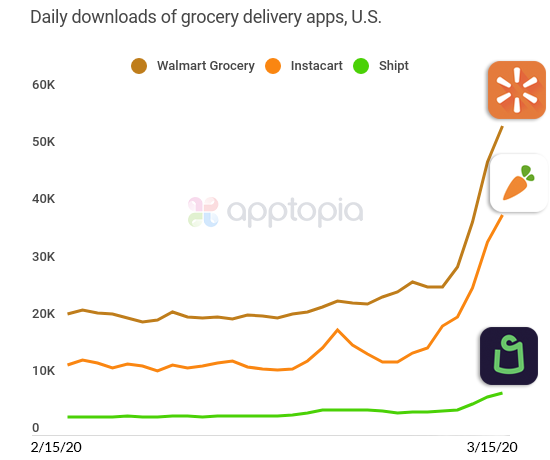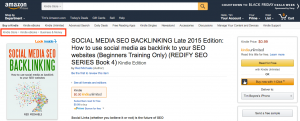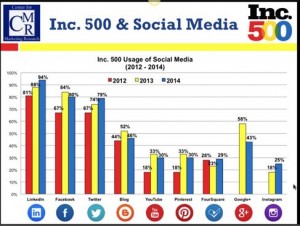With over 200,000 cases of COVID-19 in the US and global cases rapidly approaching 1 million, the novel Coronavirus has had a huge impact on people and businesses worldwide.
And things are going to get worse before they get better.
Now that countless states are in quarantine or on lockdown, people are spending more time than ever on the internet. In fact, internet usage has increased by as much as 50%.
On the surface, it might seem like a golden age for ecommerce businesses, but in reality, the situation is much more complex. If you’re in retail, there’s a good chance that you’ve already seen big changes in your customer base.
Millions have already lost their jobs or had their hours cut back. Economists are predicting that the US economy will take a 2.7 trillion dollar hit. Odds are, we’re heading into a global recession—fast.
As a result, while people are spending more time than ever online, even ecommerce businesses are being affected by COVID-19. Whether it’s manufacturing issues, product shortages, shipping delays or a hesitant customer base, the novel Coronavirus is hitting retail businesses hard.
If this all sounds a bit too familiar, this article is for you. We’re going to take a look at what’s going in the ecommerce space right now and what you can do to make the most of this situation. Let’s dive in.
Ecommerce is Changing
At the moment, things are rough for a lot of retailers. They’re better if you’re already selling online, but even among ecommerce businesses, 36% of retailers believe that COVID-19 will have a negative impact on their sales.
This novel Coronavirus has created a lot of challenges, but it isn’t all bad news. There a lot of opportunities hidden within these challenges, too.
From a long-term perspective, COVID-19 is changing the way people shop online. While ecommerce has grown steadily over the years, the fact of the matter is that the overwhelming majority of retail spend happens offline.
But, when you can’t (or don’t want to) shop at a brick-and-mortar store, you have to get creative.
It’s easiest to see this shift in mindset in the retail stores that are on the frontlines of this pandemic: the grocery stores. While online grocery services have been around for a while, they haven’t been widely adopted. Most people still just go to the grocery store when they need something and they like being able to see, touch, hold and smell their food.
Now, however, visiting the grocery store in person is a bit of a guessing game. Will you find what you need? How many stores will you have to visit? Will you come home with Coronavirus?
To deal with all of this uncertainty, people have begun moving their grocery shopping online in droves.

Image Source: Apptopia.
Even people in historically digital-resistant demographics are starting to order groceries and other commodities online. After all, for people in the 60+ demographic, this can literally be an “adapt or die” situation.
This isn’t just good news for grocery delivery apps like Shipt, though.
Technology always has an adoption curve. Learning anything new takes extra effort—even if that new thing saves time, effort and money—so it often takes years or decades for new solutions to become commonplace. For example, smartphones existed for more than a decade before Apple introduced the iPhone.
Under normal circumstances, it would be years before people discovered all of the opportunities and benefits ecommerce provides. It would simply be too much effort to explore all of their options and figure out new ways to do things.
With COVID-19, however, everyone is being forced to figure out how to shop online. That knowledge won’t go away at the end of this crisis. How people shop is changing and—for ecommerce businesses, at least—it’s changing for the better.
Seizing the Moment
So, ecommerce is changing. People are learning how to shop online, and that’s a skill they’ll use for decades to come.
How do you take advantage of all that?
Well, if Amazon is any indicator, now is the ideal time to take things to the next level. The folks over at Amazon know a thing or two about ecommerce, and—between hiring 100,000 additional employees and heavily investing in non-essential and essential items—they’ve been aggressively working to take advantage of this retail situation.
The future will be different for your retail business. How it changes, however, will depend on how you handle the next few months.
Low Demand, High Supply
For some ecommerce companies, demand has largely disappeared. This is particularly true for businesses that are selling expensive, non-essential products like expensive handbags or watches.
In this situation, it may feel like you don’t have many options. You aren’t selling something people truly “need”, so with the future of the economy in doubt, it can be hard to get people to spend their money on something they only “want”.
But here’s the thing, “want” and “need” are pretty subjective.
In difficult times, people feel a “need” for relief. They need a break from all the stress, frustration and worry that they’re constantly feeling. They need to feel powerful, stable and safe.
With the right marketing approach, you can play to all of those needs—especially if you’re selling something that people really want.
Buying something you want just because you want it is something that makes people feel like life is under control. It makes the world feel normal again. Your customers want a reason to feel good about spending their money—you just have to give it to them.
For example, everyone knows that COVID-19 has hit the economy hard. By running a “help us stay in business” sale, you can simultaneously create a mild fear of missing out while also making people feel good about supporting a business in need.
All of a sudden, they “need” to buy your products, or they’ll miss out on a rare and unusual opportunity. If you’ve got a great remarketing list, this can be an easy way to increase demand and drive more short-term sales. People will also feel more attached to a business that they helped save, so this tactic is a good way to build long-term brand loyalty, too.
If offering significant discounts isn’t feasible or is off-brand, you can try bundling your core items with free essential items like toilet paper. The jeweler below even flipped things around and created a sale that went viral by selling toilet paper for $ 3,999…and including a free diamond ring as part of the purchase.

Alternatively, you can make “wants” into “needs” by leaning into the concept of self-care. People are exhausted from staying home, worrying about the Coronavirus, and a million other things, so a “pamper yourself”-type campaign can be a great way to drive sales.
In addition to changing up your messaging, you may also want to take advantage of this time to build out your marketing strategy and get ready for the world post-COVID-19, but we’ll get more into that in a bit.
High Demand, Low Supply
On the other end of the spectrum, many businesses have plenty of demand…and not enough product to meet that demand. This can create some real challenges.
Depending on what you’re selling, though, there are some good ways to handle this high-demand, low-supply situation. You’re not the only business with product shortages, so it’s likely that your customers are frustratedly bouncing from site-to-site trying to find a way to get what they need.
To give them a hand, you may want to offer a backorder or delayed shipping option on your site. That way, people know they can at least get in line for the products they need.
You can also market this sort of backorder list directly, too. If your product is particularly hard to get, you can advertise a waiting list and get orders even before you have the product on hand.
If neither of these approaches are feasible for your business, now is a great time to get ahead. There might not be much you can do about your current situation, but that doesn’t mean you can’t prepare for the future.
Gearing Up for a Post-Corona World
The world of ecommerce is changing. Your customers are changing. That change isn’t going to go away—even after the Coronavirus disappears.
If you aren’t in either of the situations mentioned above, you’re in a great spot to ramp up your digital marketing. Your audience is active online and, with many of your competitors unable to effectively advertise, it’s a great time to run ads.
Even if you’re lucky enough to be well-positioned to take advantage of this quarantine, though, now is the time to really dive into your marketing. As marketers, we always have a laundry list of time-consuming to-do projects that we can’t seem to get to.
Now is the time to get to them.
Redesign your website. Overhaul your paid social strategy. Call up your customers and revisit your buyer personas. Do whatever it takes to optimize and perfect your advertising strategy.
When all of this is over, it’s going to be a new world for ecommerce marketers. The businesses that are ready for that new world will thrive. The ones that sat on their hands will lose the initiative, customers and market share.
If you don’t use this time to get ready, you may not be able to recover.
Conclusion
COVID-19 is forcing the world to change. Your customers are learning how to shop online. They’re discovering new options and ways to get what they need from the comfort and security of their homes.
As a result, ecommerce is evolving.
The question is, will your business evolve along with it? Or will you be left behind as your customers move on to other businesses who adapted to meet the changing needs of their market? The answer is up to you.
Digital & Social Articles on Business 2 Community
(34)
Report Post







